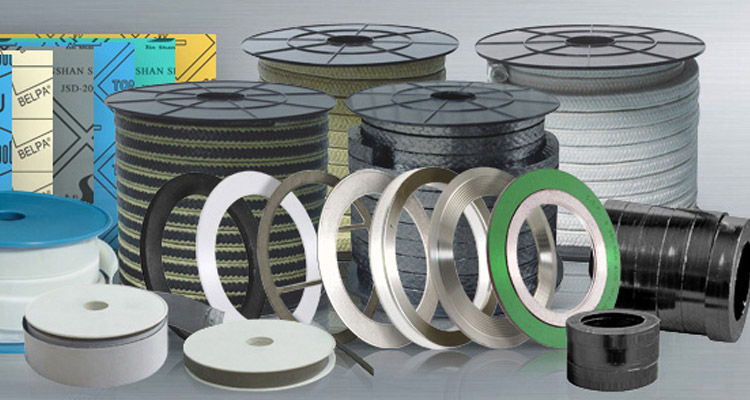All You Want To Know About Synthetic Fiber Gaskets
 One of the most important properties that gaskets need to fulfill is compressibility; and this highly depends upon the material used to make these products. People generally think that rubber gaskets provide the best compressibility, which is why they majorly opt for them. However, there is another alternative that provides great compressibility too; and that is synthetic fiber gaskets. These gaskets are instilled with specially tailored properties like ability to withstand flange compression extremes, capability of handling large temperature fluctuations, and resistance against corrosive fluid attacks from chemicals and acids.
One of the most important properties that gaskets need to fulfill is compressibility; and this highly depends upon the material used to make these products. People generally think that rubber gaskets provide the best compressibility, which is why they majorly opt for them. However, there is another alternative that provides great compressibility too; and that is synthetic fiber gaskets. These gaskets are instilled with specially tailored properties like ability to withstand flange compression extremes, capability of handling large temperature fluctuations, and resistance against corrosive fluid attacks from chemicals and acids.
Which materials are used to build a synthetic fiber gasket?
Synthetic fibers are man-made materials like plastic and glass-based filaments that are built with a toughened molecular backbone. A long list of such synthetic materials can be used to build synthetic fiber gaskets. Different fiber types are used to produce gaskets with different strengths, temperature ratings, and compressibility. These range from cellulose and vegetable fibers to stronger materials like Aramid. In case of the requirement of additional compressibility, cork or rubber binders are added. While rubber is a natural product, the rubber used in synthetic fiber gaskets is a synthetic version. This kind of rubber functions over a wider temperature range and is lesser vulnerable to damage by UV light. The most commonly used rubber types in such gaskets include neoprene, nitrile-butadiene rubber (NBR), styrene-butadiene rubber (SPR), and EPDM rubber. Another option to build synthetic fiber gaskets is of vulcanizing cellulose fiber materials to make paper-like materials that are both sturdy and lightweight.
How are synthetic fiber gaskets manufactured?
Fiber gaskets are made by first preparing the material, which is made through a process similar to papermaking. Strands of fiber are spread out and saturated with resin, which is then dries to form sheets that can be easily cut to shape. These sheets are loaded with blends of glass, graphite, PTFE, and other synthetic filaments; the exact mix ratio of which is decided upon by the manufacturer so that the material accommodates a pre-determined fluid medium. Here, special blends of rubber and Aramid act as a structural framework for these strands. They bind together to form long sheets, which are then die stamped into synthetic fiber gaskets, and are tailored to fit any possible sealing application. However, this process varies from manufacturer to manufacturer. But, in any case, the binding agent used is the most critical element in the manufacturing process, as it is this material that binds the toughened filaments in place.
Where are synthetic fiber gaskets used?
Synthetic fiber gaskets that are bonded with rubber and cork are highly used in the automobile and aerospace industries as fuel and lubricant resistant seals, because of their excellent dimensional stability, even when the flange fastening pressure bears down with immense compressive strength. Also, synthetic fiber gaskets have high tensile strength and an upper temperature limit of 250 – 350°F, added to which they also have excellent resistance to chemicals and oils. These combined properties make them highly popular in industrial applications, where chemical and petroleum products are manufactured.
Now that you know all about synthetic fiber gaskets, you must also realize that there are a wide range of gaskets available in the market; and you must know which gaskets will suit your particular usage and application. However, for any kind of gaskets like metallic, non-metallic, and semi-metallic, you need to go nowhere else, but approach Trim Engineering Services, one of the most renowned spiral wound gasket manufacturers in India.

